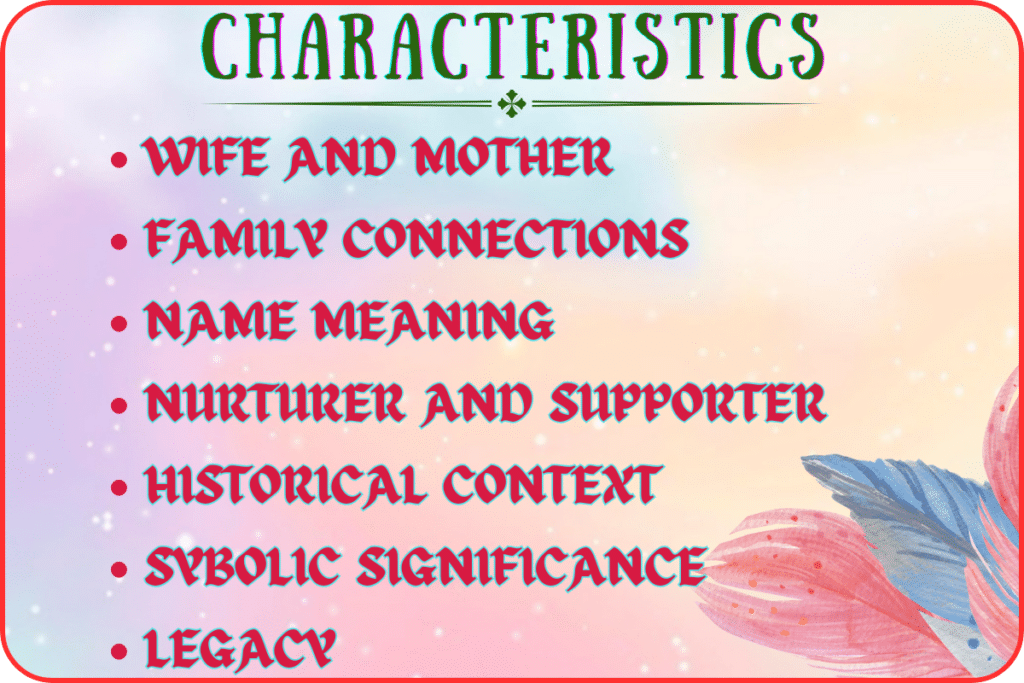AMBITIOUS ADAH IN THE BIBLE
Who was Adah in the Bible ?
Adah in the Bible, are mentioned in Genesis 4:19-22. Here is the passage;
Genesis 4:19-22 (NIV):
“Lamech married two women, one named Adah and the other Zillah. Adah gave birth to Jabal; he was the father of those who live in tents and raise livestock. His brother’s name was Jubal; he was the father of all who play stringed instruments and pipes.”
Meaning of Adah in the Bible
The name “Adah” carries significant meaning in the biblical context. It translates to “ornament” or “adornment,” reflecting qualities of grace and beauty. This name symbolizes Adah’s nurturing presence and potential influence within her family. As a wife of Lamech and mother of Jabal and Jubal, Adah’s role is multifaceted.

Her name underscores her beauty and elegance, which likely played a significant part in her relationships and interactions within her family. The name “Adah” serves as a testament to her beauty and the beauty she brought to her family, making her a significant figure in biblical history.
Lamech: The Husband of Adah in the Bible
Lamech’s Significance
Lamech, a descendant of Cain, plays a crucial role in understanding Adah and Zillah’s story in the biblical account. His bold declaration in Genesis 4:23-24 about avenging himself “seventy-seven times” showcases his complex character, blending elements of justice and retribution. This statement highlights Lamech’s strong sense of self-preservation and his willingness to take matters into his own hands.
Polygamy and Influence
Lamech’s marriages to Adah and Zillah illustrate the polygamous practices prevalent during that time. His multiple marriages demonstrate his social status and influence, as he was able to maintain multiple relationships. This also underscores the roles his descendants, including Jabal and Jubal, would play in society.
Lamech’s influence on his descendants is significant, as it sets the stage for their contributions to early human development and innovation. His complex character and societal influence make him a pivotal figure in understanding the biblical narrative.
Historical Context of Adah in the Bible
Adah’s existence, as described in the Bible, coincides with the formative years of human civilization. During this period, significant advancements were made in technology, culture, and social structures. Adah’s story reflects the growing complexity of human society in the antediluvian world, a time before the great flood.
Her life and experiences provide insights into the social, cultural, and technological developments that were shaping the early stages of human civilization. Adah’s narrative offers a glimpse into the evolving nature of human society during this pivotal era, as humanity navigated the challenges and opportunities of its nascent stages.
Their Children: Jabal, Jubal

Jabal: Father of Those Who Live in Tents and Raise Livestock
Jabal, son of Lamech and Adah in the Bible, made significant contributions to early human society. By living in tents and raising livestock, he pioneered nomadic pastoralism, a lifestyle that would become crucial for many cultures. His innovations in animal husbandry laid the groundwork for future agricultural advancements.

Jabal’s work in developing livestock management and breeding practices allowed for the growth of herds, providing a reliable source of food and resources. This foundational work in animal husbandry had lasting impacts on the development of agriculture and the evolution of human societies. Jabal’s innovations played a vital role in shaping the course of human history and the development of early civilizations.
Jubal: Father of All Who Play Stringed Instruments and Pipes
Jubal, the biblical figure, had a profound cultural impact as the “father of all who play the lyre and pipe.” His innovations in music brought art and expression to human experience, enriching the lives of his community and future generations.

Jubal’s creations in stringed instruments and pipes laid the groundwork for the development of music, fostering a deeper connection between people and their emotions. His legacy continues to influence music and culture, shaping the way we express ourselves and connect with others through the universal language of music.
Significance and Legacy of Adah in the Bible
Adah’s role in the Bible, though brief, is significant because:
- Maternal Influence: As a mother, Adah contributed to the early development of important cultural and societal advancements through her children. Her nurturing role helped shape innovations in pastoral life and music.
- Pioneering Spirit: Through Jabal and Jubal, Adah is associated with pioneering new ways of living and expressing creativity. This legacy highlights her indirect but impactful influence on the evolution of human society.
- Empowerment and Symbolism: Adah symbolizes the often unacknowledged role of women in history. Her story reminds us of the contributions of maternal figures in the growth and development of early human culture.
Adah in Jewish Tradition
In the Jewish tradition, Adah’s significance is often viewed through the lens of her descendants’ contributions to early human civilization. Her sons, Jabal and Jubal, are regarded as foundational figures in their respective fields – Jabal as the father of those who dwell in tents and have livestock, and Jubal as the father of all who play the lyre and pipe.
Jewish interpretations emphasize the cultural and societal impacts of Adah’s lineage, as her sons are credited with establishing key aspects of technology, culture, and social structures that shaped the early development of human society. Adah’s story reflects the growing complexity and advancement of the antediluvian world, as humanity navigated the formative stages of its existence.
Lessons learned from Adah in the Bible
From the brief mention of Adah in the Bible, primarily in Genesis, several lessons can be gleaned that offer insights into her character and the broader themes of biblical narrative:
- Role of Women: Adah’s story highlights the role of women in ancient societies, particularly as wives and mothers. Despite limited direct narrative, her influence through her children, Jabal and Jubal, underscores the significant impact women can have on familial and societal development.
- Nurturing and Support: As a mother, Adah played a crucial role in nurturing and supporting her children’s talents and contributions. Her influence helped shape innovations in pastoralism and music, illustrating the importance of familial encouragement in fostering individual gifts.
- Innovation and Creativity: Through Jabal and Jubal, Adah’s family contributed to early innovations that laid the foundation for cultural and technological advancements. This underscores the biblical theme of humanity’s creative capacity and the role individuals play in societal progress.
- Faith and Family Dynamics: Adah’s marriage to Lamech and her role in the lineage of Cain’s descendants provide insights into familial relationships and dynamics in biblical narratives. Her story reflects themes of faith, perseverance, and the complexities of human relationships.
- Legacy and Influence: Despite her relatively minor role in biblical texts, Adah’s legacy through her children highlights the lasting impact individuals can have on history. Her story encourages reflection on how personal actions and choices can shape future generations and contribute to the broader tapestry of human experience.
In essence, Adah’s story in the Bible offers lessons on the significance of familial roles, the empowerment of women, the nurturing of talents, and the enduring impact of personal contributions to society and culture. Her narrative invites readers to consider the profound implications of individual actions within the context of broader historical and spiritual themes.
Characteristics of Adah in the Bible

Adah, as portrayed in the Bible, is a character who represents several key characteristics and roles within the narrative:
- Wife and Mother: Adah in the Bible, is introduced as one of the wives of Lamech, a descendant of Cain. This role highlights her position within the family structure of early biblical societies, emphasizing her role in marriage and motherhood.
- Family Connections: Adah’s lineage is traced through her marriage to Lamech and her children, Jabal, Jubal, and possibly others. Her family connections provide insights into the genealogical and familial relationships that were significant in biblical narratives.
- Name Meaning: The name “Adah” means “ornament” or “adornment” in Hebrew, suggesting qualities of beauty, grace, and perhaps symbolic importance within the context of her family and descendants.
- Nurturer and Supporter: As a mother, Adah is depicted as nurturing and supportive of her children’s endeavors. Her influence is evident in the achievements of Jabal and Jubal, who are credited with innovations in pastoralism and music, respectively.
- Historical Context: The story of Adah in the Bible, is situated within the early post-Edenic period of biblical history, reflecting themes of human development, societal advancements, and moral complexities.
- Symbolic Significance: Beyond her literal role, Adah may carry symbolic significance in representing themes such as familial relationships, the roles of women in ancient societies, and the passage of generational knowledge and traditions.
- Legacy: Adah’s legacy is primarily through her children, whose contributions to early human civilization mark her influence as a matriarch within biblical genealogies.
Adah in the Bible is characterized as a wife, mother, and influential figure in the lineage of Cain’s descendants. Her story provides insights into familial dynamics, cultural advancements, and the foundational roles of women in early biblical narratives.
Legacy of Adah in the Bible
The legacy of Adah in the Bible, is preserved in the cultural and technological milestones achieved by her children, Jabal and Jubal. Her story highlights the importance of contributions that extend beyond immediate actions, influencing future generations and societal structures. Through her descendants, Adah’s impact is felt in the development of key aspects of early human civilization, such as the domestication of livestock, the invention of musical instruments, and the establishment of cultural traditions.
Adah’s narrative underscores the enduring significance of individual lives and their ability to shape the trajectory of human society, even long after their own time. Her story serves as a testament to the lasting impact that can be made through the actions and innovations of one’s progeny.
Modern Reflections on Adah
The story of Adah in the Bible can be seen as a testament to the enduring impact of pioneering endeavors, even in the face of adversity. Her life and the contributions of her descendants, Jabal and Jubal, highlight the foundational figures in our histories who have shaped advancements in various fields, often without receiving widespread recognition. Adah’s narrative encourages us to appreciate the lasting influence of those who paved the way, even when their immediate actions may have been overlooked or undervalued.
Her story serves as a reminder that the ripple effects of individual lives and innovations can continue to shape the trajectory of human civilization long after their time. The legacy of Adah in the Bible underscores the importance of recognizing and honoring the unsung heroes who have laid the groundwork for progress.
Conclusion
Adah’s brief presence in the Bible represents the genesis of pivotal developments in early human civilization. Through her sons Jabal and Jubal, she is credited with founding the pastoral life and the invention of musical instruments, marking significant milestones in the advancement of human culture and technology. Adah’s story serves as a reminder of the lasting impact that one generation can have on the next, as her descendants’ contributions continue to shape the trajectory of human society.
Adah’s narrative inspires reflections on the enduring influence of pioneering endeavors, even when the individuals themselves may not receive widespread recognition. Her legacy underscores the importance of honoring the foundational figures who have laid the groundwork for progress throughout history.
Reference
Unique FAQ’s
1. Who was Adah in the Bible? Adah is one of the wives of Lamech in the Bible, mentioned in Genesis. She is the mother of Jabal and Jubal, significant for their contributions to pastoralism and music.
2. What is the significance of Adah’s name? The name “Adah” means “ornament” or “adornment” in Hebrew, symbolizing beauty and value, which aligns with the cultural contributions of her descendants.
3. What role did Adah’s children play in the Bible? Adah’s children, Jabal and Jubal, are credited with pioneering pastoral life and music, respectively, marking important developments in early human culture.
4. How does Adah’s story relate to modern readers? Adah’s story highlights the lasting impact of foundational figures in cultural and technological advancements, encouraging modern readers to appreciate contributions that shape society.
5. Why is Adah an important figure in Biblical history? Adah is important for her role in the genealogy of Cain and as the mother of cultural pioneers, illustrating the development of early human civilization through her descendants.


1 thought on “51. AMBITIOUS ADAH IN THE BIBLE”